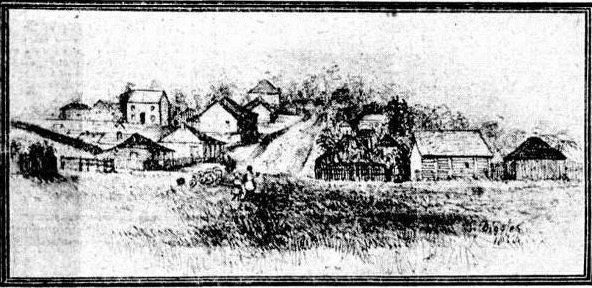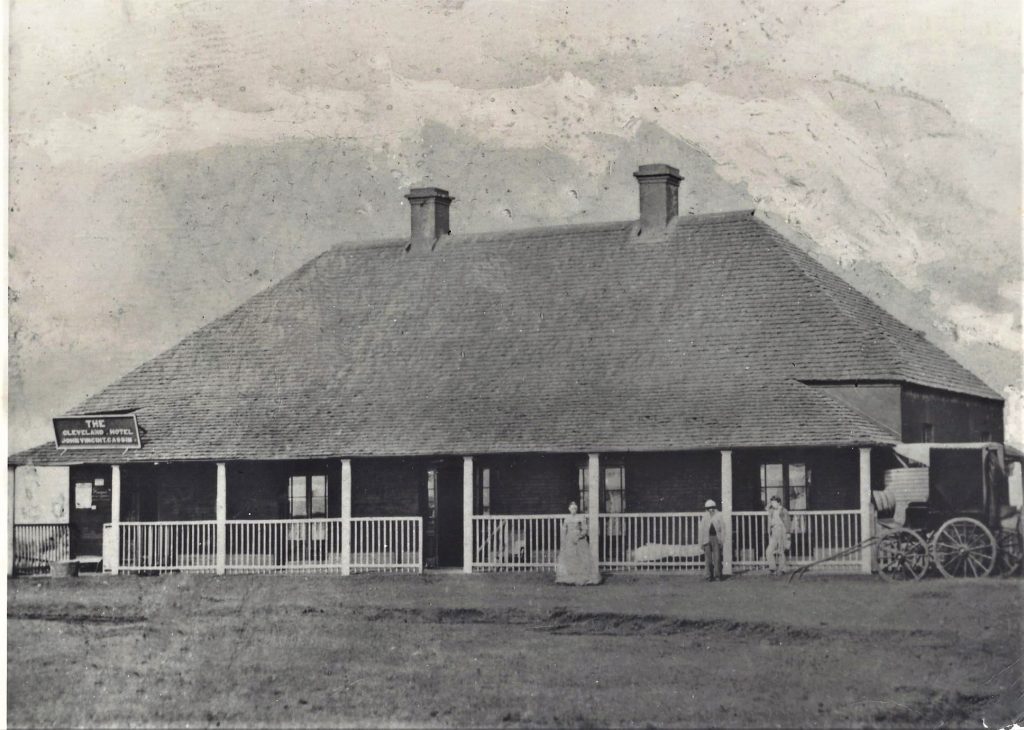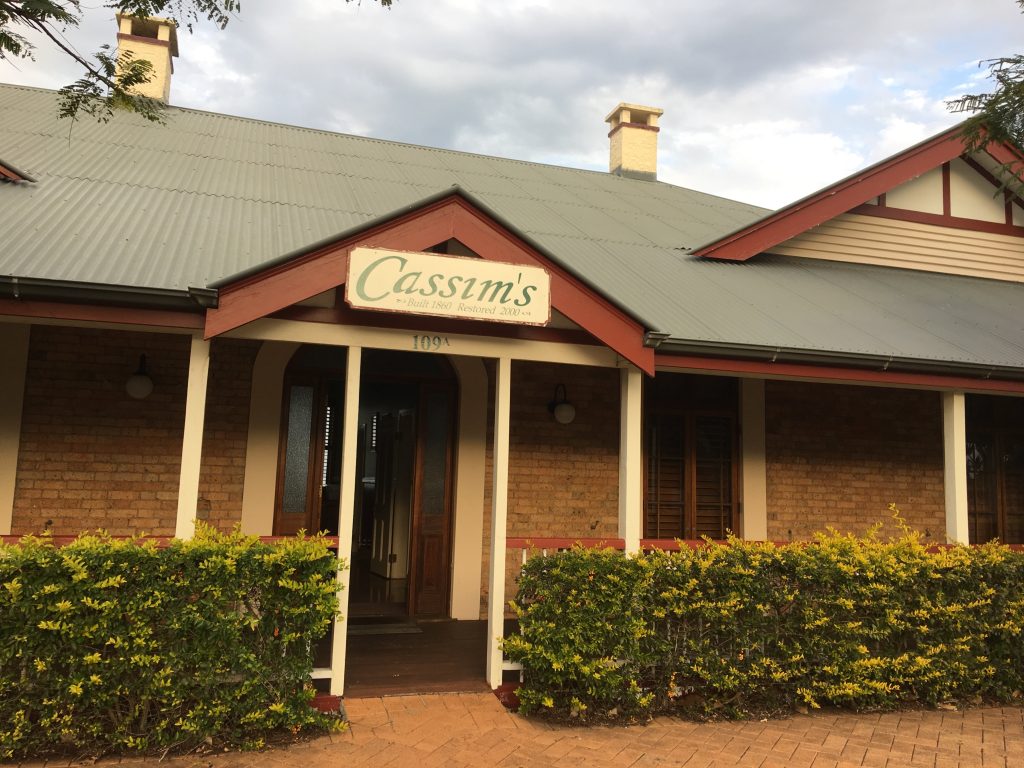We closed Part 1 of our blog on Cassim, with details of his penal transportation from Mauritius to Van Diemen’s Land (Tasmania). From there, he was transferred to Moreton Bay (modern Brisbane) and sent to the Limestone Hills (modern Ipswich) to look after government livestock. Here, we note that during the years 1847-8, in tandem with East India Company managed indentured migration to Mauritius, British Guiana, and Trinidad, a few private individuals brought 250 indentured Indian workers into the area for the same kind of employment.
Cassim proved a compliant and obliging convict labourer, receiving his ticket of leave in December 1843—earlier then the proscribed four to five years for a seven year sentence. This had been granted following a petition from an Irishwoman called Mary Taylor, who was identified as Cassim’s wife. It is not clear whether she too had been a convict, but it seems likely; nor is there any record of their marriage in contemporary church registers. Whatever the case, by 1846 Cassim was going by the name John Vincent, which seems to have been given to him by the priest who baptised him when he became a Catholic at some point between 1844 and 1845. Such a conversion makes marriage seem almost certain and Mary was invariably described as his wife. Cassim was the first Catechumen in the Brisbane Church and lived as a faithful Catholic and a generous donor.

Figure 1: The humble beginnings of Main St Kangaroo point from a sketch by Mr S Diggles (“a well-known artist of the early days in 1857”), Daily Mail, 31 July 1924, p 15.
By 1851, John and Mary were living in Brisbane Town at Kangaroo Point (Figure 1). They purchased land in John Street and opened a Boarding House, which welcomed married couples and single men during the busy Brisbane Assizes. So popular was the establishment that by 1855 they had relocated to a 17-room building on nearby Main Street. In advertising the hospitality of their premises, it was noted that “John Cassim, a native of India, and accustomed to attend upon gentleman, will with his wife be prepared to provide board and lodging”. In the late 1850s John and Mary took up another lease on a large house at the extremity of Cleveland Point overlooking Moreton Bay. Cleveland was some 20 miles from the main settlement at Brisbane and sparsely populated, making it a very different proposition from the busy town location at Kangaroo Point. Reinforcing the repeated patterns of Cassim’s colonial connections, the lease had been advertised as perfect for the recovery of “invalids from India and this Colony.” The idea of a restorative resort for exhausted and consumptive colonists was precisely the business model John and Mary adopted. The house eventually became the Grand View Hotel, Brisbane’s oldest licenced premises. In an interesting aside, Cassim leased the house from one Francis Bigge, nephew of the more famous Commissioner, John Thomas Bigge.
The undertaking must have been a success because by 1860 Cassim had sufficient capital to purchase a nearby plot of land and build his own premises. This became a licensed Inn and was later known as Cassim’s Hotel (Figure 2, Figure 3). On a previous visit to Cleveland in 2018 we met someone with a close association to the property who expressed a particular connection to the story of Cassim; sensing a spiritual presence as well as an historical past. This emotional identification is interesting because it reminds us how charismatic life courses can resonate beyond the obvious ties of genealogy.

Figure 2: Cassim’s Hotel Cleveland, c.1862. Source: Redland Museum, Cleveland, QLD, Australia. We believe that the two figures to the left of this image are John and Mary Cassim.

Figure 3: ‘Cassim’s’, Cleveland. Photo: Clare Anderson, 2023.
We know almost nothing of John’s life in India and Mauritius, but in Brisbane he came to enjoy a social standing that meant he appears frequently in the public records. In 1854, for example he reinforced his growing status as a respectable businessman by making financial contributions to the Moreton Bay Regatta and in 1855 he joined other local worthies by contributing to the British Empire Patriotic Fund, set up to raise money for the widows and orphans of the Crimean War. These were deliberate acts of belonging, indicating the steady progression of a sincere or strategic assimilation.
The couple employed only Indigenous servants in the Cleveland boarding house, and it is possible that among them was an Indigenous man who called himself John William (Billy) Cassim. In making this speculation it is impossible not to recall how this sort of renaming echoes the taking of masters’ surnames by enslaved people, including in Mauritius. This was a practice with which Cassim would have been familiar.
In 1857, the Melbourne journalist Edward Wilson wrote about his sojourn at Cleveland House in the Moreton Bay Courier, observing that:
The establishment of Host Cassim is unique. It is quite isolated, the nearest resident being a fellmonger, upon a creek, four miles off. Cassim himself is a small native of the Mauritius, as dark as one of the aborigines: his wife is an Irishwoman and the only white personage in the establishment, with the exception of a small boy … Yet in this semi-civilised circle we passed several very pleasant days, and I confess that I left Cleveland with considerable regret.
The Cassims’ employment policy may have reflected the shortage of labour experienced generally across the whole Moreton Bay district during this period, and most particularly in a location as remote and sparsely populated as Cleveland Point. The population was scattered and largely made up of itinerant trades such as timber getters and the raft and cutter men who made up the first wave of settlement. The cotton, maize and sugar growers would follow creating a landscape that would have been familiar to Cassim. Notwithstanding the obvious shortage of domestic servants, it is also possible that the couple was deliberately providing employment to local Indigenous men and women. Wilson makes some of the usual assumptions about the nature of this labour, but makes no attempt to draw racial boundaries or make judgments about John and Mary’s mixed marriage. Their semi servile status as purveyors of hospitality was perhaps a protection of sorts.
There is a curious story about Mary Cassim written in 1988 to mark Australia’s national bicentenary. It is just one of many stories compiled to celebrate women of Redlands (Redlandshire is the municipal district in which Cleveland is now located). Its detail suggests that it was inspired by Wilson’s article. The story focuses on one half of the colonial couple: the cold and stern Irish woman married to the warm and playful Mauritian. The story combines the basic historical facts of John and Mary’s life with a fanciful imaginative turn. The narrator is identified as an Indigenous man, residing at the hotel as a paying guest. However well-intentioned, that last detail of the characterisation conveys a fundamental misunderstanding of the connected histories of colonialism and segregation. The story continues with the description of a terrifying tropical storm, over the course of which, the strict and aloof Mary is revealed to be as kind and joyful as her husband. Yet, the more interesting revelation in this story is how the success of Mary and John’s mixed-race marriage and their positive relationship with the local Indigenous community has acquired an almost mythic quality in the history of Cleveland Point.
Mary Cassim died on 11 February 1861, aged just 45, and was buried in Dunwich cemetery on Stradbroke Island. Precisely why is not made clear but given how sparsely populated Cleveland was in these years, it was probably the nearest consecrated ground. Of course, it may also demonstrate an emotional attachment to the bay and its islands. John remained in the area, keeping active in the church. Indeed, as was customary for hoteliers during this period, he made his hotel available for conducting Mass. He remarried in 1868, to another Irishwoman Mary Ann (Annie) Rafter, who had arrived in the Australian colonies as a free migrant in 1866. John died in 1884 and was buried with his first wife at Dunwich. A tiny island in the bay is named after him (or perhaps his namesake Billy): Cassim Island. Annie inherited his property but does not appear to have flourished. Nor does it seem that she or Mary ever had any children with Cassim. Yet the Dunwich cemetery plot is unexpectedly large, suggesting expectations that were never fulfilled. There was certainly room for Annie. She had died at Dunwich in 1921 in the Benevolent Asylum (which our friend Jan Richardson told us was in effect an old people’s home), but her final resting place is recorded as the mainland cemetery at Nudgee. We can find no trace of that.
In contrast to poor Annie’s undistinguished departure The Australian (Catholic) weekly newspaper had published a fulsome obituary for John Cassim on 7 March 1884, in which he was described as an ‘old and respected resident of Cleveland’, ‘ever-genial’, ‘an upright, valuable colonist’, and a ‘model of probity and propriety’. ‘Quiet, unobtrusive, and courteous in character,’ the paper continued, ‘he made no enemies, and possessed many friends.’ His place, the writer reflected ‘shall not be easily supplied for take him for all in all, as a colonist, a Christian and a Catholic, he was one of those men whom to know was to like and revere his worth.’ Thus, from India to Mauritius and on to Tasmania and Queensland, as he interacted with an Indian Ocean penal settlement and entered the system of an Antipodean one, it seems that in his marriage and business interests, as also in his faith, he had found and gained redemption.
Clare Anderson and Tamsin O’Connor.
Further reading:
- Patrick J. Tynan, Johnny Cassim: Coolie – Convict – Catechumen – Colonial Entrepreneur (1814-1884) (Toowoomba QLD: Church Archivists’ Press, 2006).
- Bill Thorpe and Raymond Evans, ‘Frontier Transgressions: writing a history of race, identity and convictism in early colonial Queensland’, Continuum: Journal of Media and Cultural Studies, 13, 3 (1999), 324-32.
- Clare Anderson, Subaltern Lives, Biographies of Colonialism in the Indian Ocean World, 1790-1920 (Cambridge: Cambridge University Press, 2012), chapter 3.
- Jan Richardson, ‘Out of sight, out of mind: Ex-convict female paupers incarcerated in Queensland’s benevolent asylums’, Journal of Australian Colonial History, 24 (2022), 133-56 (open access).
- ‘The Convicts from Mauritius’, Moreton Bay and More Blog.
- https://apps.des.qld.gov.au/heritage-register/explorer/detail/?id=601130 (Cleveland Hotel)
We would like to thank Jan Richardson and staff at the Redland Museum for their insights and assistance.